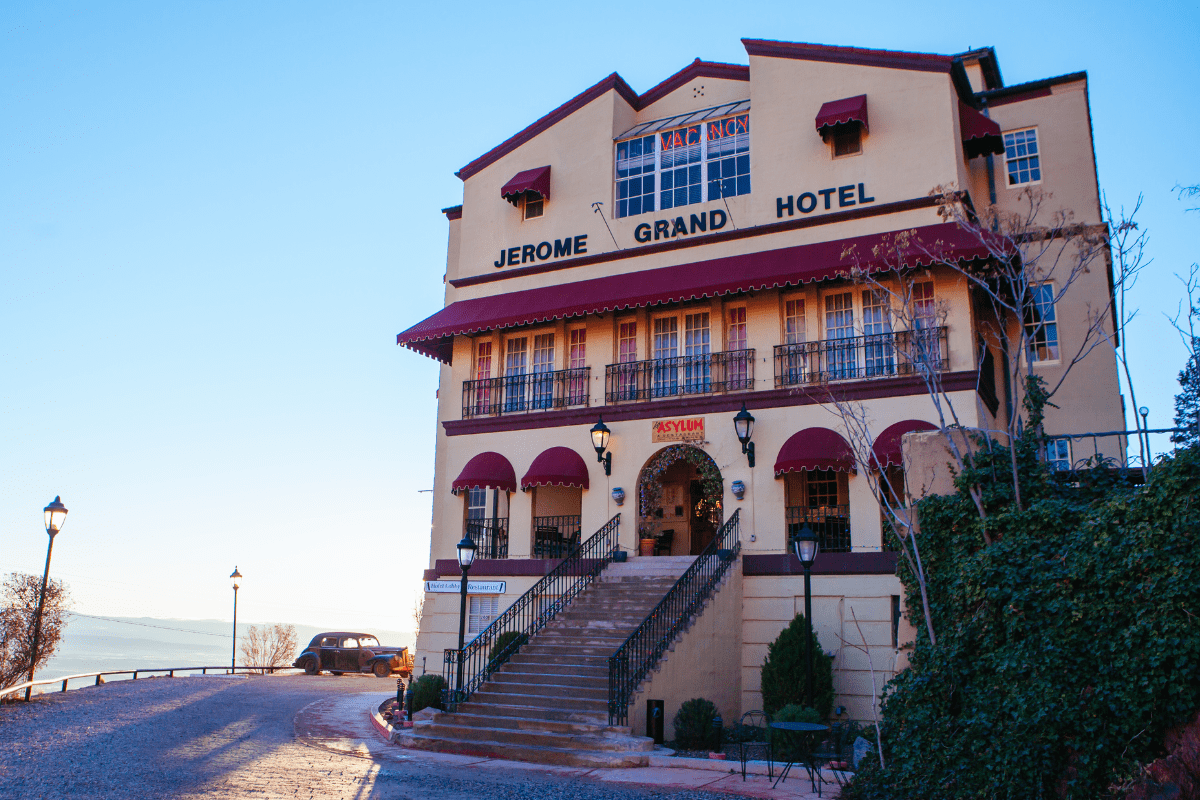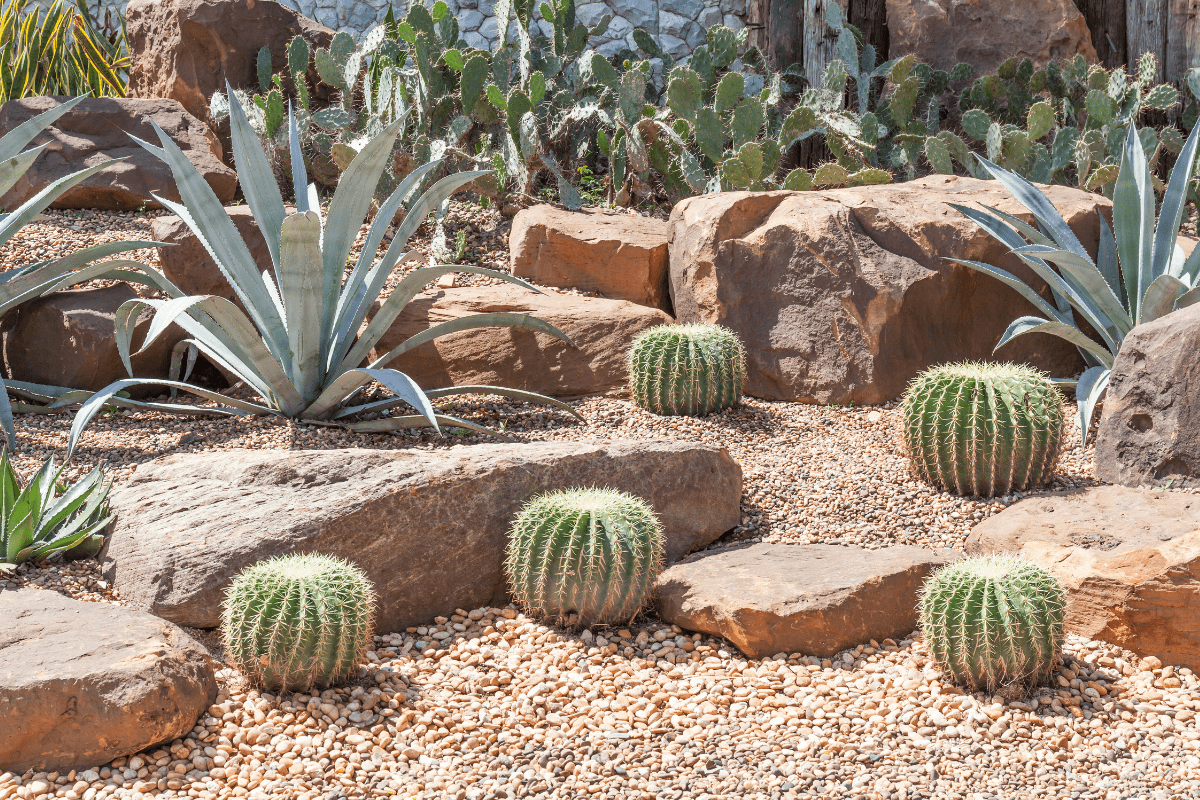Phoenix residents endured 143 days above 100°F in 2024, including a brutal 113-day streak that left everyone questioning their life choices. When your steering wheel becomes a branding iron and your car's AC sounds like it's crying, it's time to escape the Valley's concrete oven. Fortunately, Arizona's diverse geography offers genuine relief within two hours, from mountain towns 20 degrees cooler to rivers that'll make you forget you live in America's hottest major city.
The immediate heat relief champions
Sedona delivers Instagram views with actual temperature drops
The two-hour drive to Sedona via I-17 and Highway 179 isn't just about spiritual vortexes and overpriced crystals. At 4,500 feet elevation, this red rock wonderland provides a legitimate 10-15 degree temperature drop that feels like stepping into air conditioning after a Phoenix summer day. The town attracts 1.39 million visitors annually and generates over $1 billion in tourism revenue, yet savvy visitors can still find pockets of tranquility.
The Chapel of the Holy Cross remains refreshingly free to enter and even offers golf cart shuttles for accessibility, though parking fills faster than a Phoenix swimming pool in July. For hikers, trails like Devil's Bridge require only a $5 Red Rock Pass daily or $15 weekly, while Cathedral Rock provides moderate challenges with those iconic sunset views everyone posts on social media.
Here's the insider strategy: arrive before 9 AM to claim parking at trailheads, then retreat to Tlaquepaque Arts Village's shaded courtyards when the afternoon sun gets serious. Budget accommodations start around $66-102 per night for basic motels, though luxury resorts can hit $400-800 because apparently breathing cooler air costs extra. March brings peak crowds and peak prices, while July-August offers fewer tourists despite temperatures still reaching the low 90s.
Salt River tubing turns desert survival into summer tradition
Just 40 minutes from downtown Phoenix, Salt River Tubing operates from April 26 through September 28, transforming a desert river into Arizona's unofficial summer salvation. At $28 per person with tube rental or $22 for shuttle-only service, it's cheaper than therapy and arguably more effective for heat-related mental health issues.
Float times range from 2-3 hours for the half trip to 4-6 hours for the full experience, depending on water flow and how many times you get stuck on rocks. When flow exceeds 1,200 cubic feet per second, children under 13 must stick to the bottom half, which sounds arbitrary until you realize these aren't pool noodle conditions. The minimum requirements of 8 years old AND 4 feet tall reflect genuine safety concerns, not corporate liability paranoia.
Success requires arriving before noon since the last tube rental occurs at 2 PM and parking lots fill like Black Friday electronics stores. The prohibition on glass containers makes perfect sense when you're walking barefoot on river rocks, and wild horse sightings along the route provide unexpected desert wildlife encounters that beat another saguaro photo. September operations shift to Friday-Sunday only, offering quieter floats as college crowds return to campus and reality.
Mountain town escapes worth the drive
Payson offers genuine pine forest relief closest to home
The 90-minute drive via Beeline Highway delivers you to 4,900 feet elevation surrounded by the world's largest ponderosa pine forest. Summer highs reach only the low 90s, providing significant relief when Phoenix hits 115°F and your car's dashboard could bake cookies. The town's population doubles from 15,476 to 30,000 during summer as Valley residents flee northward like climate refugees.
Tonto Natural Bridge State Park showcases the world's largest natural travertine bridge, standing 183 feet high with a 400-foot tunnel you can actually walk through. Entry costs $10 for adults and $5 for youth, with trails closing at 4 PM because apparently natural wonders need their beauty sleep. The steep but short trails, all under half a mile, lead to perspectives both above and below this geological wonder that grows several inches annually through calcium deposits.
Downtown's Green Valley Park offers three stocked fishing lakes completely free, while the reconstructed Zane Grey cabin provides literary history without admission fees. Budget hotels run $59-98 nightly, significantly cheaper than Sedona's inflated prices. The surrounding Tonto National Forest encompasses 97% of the area, offering endless hiking opportunities with Mogollon Rim Lakes at 7,500 feet providing even cooler temperatures for those willing to drive slightly farther.
Jerome clings to mountainside history and sanity
Perched at 5,246 feet on Cleopatra Hill, Jerome delivers 15-20 degree temperature relief while preserving authentic Wild West character without the theme park fakeness. The two-hour drive from Phoenix climaxes with switchback roads approaching this former copper mining boomtown that once housed 15,000 residents but now maintains just 450 souls.
Jerome State Historic Park charges only $7 admission to explore the Douglas Mansion and its mining museum, while Audrey Headframe Park remains free, featuring Arizona's tallest wooden headframe with a glass floor suspended above a 1,900-foot mine shaft. The famous Sliding Jail moved 300 feet downhill due to unstable mining ground, serving as a reminder that the entire town sits atop miles of underground tunnels like some precarious Jenga game.
Key Jerome experiences include:
- Haunted Hamburger: $12-18 burgers with valley views
- The Asylum Restaurant: $25-35 upscale dining
- Art galleries lining steep Main Street
- Antique shops in historic buildings
Parking challenges mean arriving early or accepting a climb from lower lots, but the town's designation as a National Historic District in 1967 preserved its character without aggressive commercialization that plagues other tourist destinations.
Prescott preserves territorial capital charm year round
Arizona's first territorial capital sits at 5,200-5,400 feet elevation, maintaining an average annual temperature of 70°F across 277 sunny days. The 90-minute drive via Highway 69 leads to over 700 buildings on the National Register of Historic Places, including the authentic Whiskey Row where Arizona's oldest saloon has operated since 1877.
The Palace Restaurant & Saloon serves $20-35 steaks in its historic setting, while Prescott Brewing Company offers family-friendly options at $12-20 per entree. Sharlot Hall Museum charges $9 for adults to explore 11 historic buildings, and the Museum of Indigenous People costs $10 for exceptional Native American collections.
Granite Dells' spectacular rock formations surround Watson and Willow Lakes, perfect for kayaking and paddleboarding with multiple trail connections. The Prescott National Forest provides over 450 miles of trails, from the challenging Granite Mountain summit at 7,628 feet to the family-friendly Peavine Trail following an old railroad bed. As Arizona's official Christmas City, December brings elaborate celebrations, though summer offers the best escape value with temperatures rarely exceeding 85°F.
Specialized destinations for different interests
Boyce Thompson Arboretum showcases global deserts without crowds
This 372-acre botanical wonderland near Superior houses over 20,000 plants from deserts worldwide, remaining significantly less crowded than Phoenix's Desert Botanical Garden despite being Arizona's oldest botanical institution. The one-hour drive east on US-60 leads to this hidden gem founded in 1924 beneath the dramatic Picketpost Mountain.
Summer admission drops to $16 with 6 AM-noon hours and Tuesday closures, while regular season costs $24.95 for adults. The unexpected Queen Creek riparian zone creates rare desert water features, including mirror-like Ayer Lake reflecting surrounding cacti and mountains.
Five miles of trails range from wheelchair-accessible main loops to moderate elevation changes on the High Trail. The 2024-2025 "Glass in Flight" exhibit features 19 large-scale glass sculptures of butterflies and hummingbirds by Tucson artist Alex Heveri, while the new Wallace Desert Garden added 13 acres with 5,000 plantings. September brings extended weekend evening hours for butterfly viewing during peak monsoon emergence.
Lake destinations balance adventure with investment
For those willing to invest more for comprehensive water recreation, Bartlett Lake Marina (55-60 minutes from Phoenix) and Canyon Lake Marina (45-50 minutes) offer full-service experiences beyond basic swimming holes. Pontoon boat rentals start around $295 daily at Bartlett, accommodating 12 passengers for group cost-sharing that makes the math work better.
Canyon Lake's proximity to the dramatic Apache Trail provides 950 surface acres below towering canyon walls, while the Dolly Steamboat offers scenic cruises for those preferring guided experiences without rental responsibilities. Both lakes require 21+ age for boat rentals, with safety briefings and life jackets included because apparently adults need supervision around large bodies of water.
Current conditions vary significantly: Bartlett Lake sits 20+ feet below normal levels due to ongoing drought, while Canyon Lake maintains more stable conditions. Marina restaurants like Bartlett's The Cove provide lakeside dining, though prices reflect the captive audience reality of desert water destinations.
Optimal lake strategies:
- Arrive early on weekdays for availability
- September-November offers ideal conditions
- Avoid summer weekends (crowded, expensive)
- Consider group rentals for cost sharing
Essential planning and safety considerations
Desert driving requires more than GPS navigation
During dust storms, ADOT's "Pull Aside, Stay Alive" protocol means exiting traffic immediately, turning off all lights including flashers, and waiting with the emergency brake engaged until visibility returns. Monsoon season from June through September brings afternoon thunderstorms to mountain destinations, and you should never attempt crossing flooded washes since just 18 inches of moving water can sweep vehicles away like toys.
The AZ511 app delivers real-time road conditions, proving essential when weekend construction closes major Phoenix freeways between 9 PM Friday and 5 AM Monday. Physical maps remain crucial for destinations with unreliable cell service, particularly in the Superstition Wilderness and remote forest areas where your phone becomes an expensive paperweight.
Summer strategy involves 6 AM departures to claim parking and complete activities before noon heat transforms your adventure into survival training. Each person needs one gallon of water per day in summer, regardless of destination elevation, because dehydration doesn't care about your scenic photo opportunities.
Timing and budget optimization strategies
October through April offers ideal conditions at all destinations, though accommodations cost more and crowds increase as snowbirds arrive like migrating flocks of RVs. The sweet spot hits in late September through early October, when temperatures moderate but summer tourists have departed for college or sanity.
Cost-saving passes include the $80 National Parks Annual Pass or Arizona State Parks Pass for multiple destinations. Travel writer Andi Fisher, who has documented over 60 Arizona day trips, recommends Wickenburg as her "favorite cowboy-related unique day trip from Phoenix" for authentic Western culture without the two-hour mountain drives.
With Phoenix's population approaching 4.8 million and projected to reach 7.6 million by 2055, these nearby refuges will only grow more valuable. The key lies not in discovering secret spots but in timing visits strategically, preparing adequately, and choosing destinations that match both budget and heat tolerance.
Whether seeking the $5 daily simplicity of a Red Rock Pass or investing $295 in a full-day pontoon rental, Phoenix's two-hour radius offers remarkable diversity. These accessible escapes provide more than recreation when the thermometer climbs past 110°F for the seventieth consecutive day… they deliver sanity, perspective, and a reminder that Arizona's landscape extends far beyond the Valley of the Sun's relentless summer sprawl.





